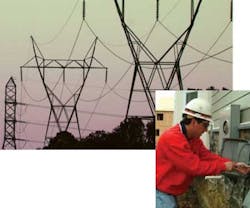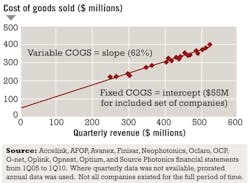Who needs 1-Gbps FTTH?
Chattanooga, TN, utility-based service provider EPB Fiber Optics stole the spot-light at September's FTTH Conference with the announcement that it would offer 1-Gbps services over its new GPON FTTH infrastructure. At the conference, EPB Executive Vice President and COO David Wade and EPB Fiber Optics Vice President Katie Espeseth admitted they weren't holding their breath while waiting for their first 1-Gbps residential customer. So what's the point?
Espeseth says the company has delivered 1-Gbps services to business users on its legacy fiber network, and already has a customer lined up for 1 Gbps on the new GPON.
But while Wade is proud of the 1-Gbps FTTH/B capabilities of the network, he's equally enthusiastic about how EPB can leverage the new infrastructure for its own smart grid efforts. The high-bandwidth pipes should easily meet EPB's current electrical generation and distribution communications and monitoring requirements, while providing insurance for what Wade expects will be a rising tide of bandwidth as the company's smart grid initiatives take off. For example, Wade sees machine-to-machine communications as a bandwidth driver going forward as EPB automates more aspects of its grid. He also values the low latency communications fiber enables.
Three weeks later, speaking between sessions of the Lightwave Optical Networks for Enterprises Conference in early October, President and CEO Eric Murray of Tantalus, a company that makes smart grid communications equipment compatible with fiber infrastructures such as FTTH, further described how utilities could leverage optical technology to improve operations.
For example, much in the way communications companies have to plan for demand peaks, so too do utilities. This demand response strategy usually has multiple levels, with increasingly more expensive energy resources used the higher the peaks extend, according to Murray. A smart demand response system–potentially fiber-enabled–that made it easy to use these expensive resources only when necessary and only for as long as needed could significantly improve grid efficiency and lower costs, Murray suggested. – Stephen Hardy
How to make money in optical components
So you're running an optical components company and your stockholders and/or investors remain unhappy with your financial position. What's a CEO to do?
According to research conducted by Karen Liu, principal analyst, components, at market research firm Ovum, it might be time for optical component companies to focus on reducing the variable costs of goods sold (COGS).
Liu examined the public financial statements of 12 companies exclusively focused on optical component development, starting with the end of the bubble. She found that the industry in general has moved through two phases of cost reduction. The first, from 2001 to 2005, focused on removing fixed costs, such as manufacturing facilities. The move toward shipping production to Asia was a hallmark of this phase. Next, from 2006 through this year, companies have looked to reduce operating costs.
Despite these strategies, even the most successful (and recently profitable) companies don't enjoy the gross margins of other high-tech vendors. Liu's research suggests that optical component executives should next pursue a reduction in the variable COGS, which Liu believes is 62 percent across the optical components industry (see Figure). That means each dollar of revenue gained costs a company 62 cents. Were the market to expand to the point that fixed costs became comparatively insignificant, the variable COGS would thus cap industry average gross margin potential at 38 percent.
Quarterly cost of goods sold as a function of revenue among 12 optical component companies. As revenue goes up, the variable cost of goods sold increases as well, which effectively caps margin potential. (Source: Ovum)
Liu writes that she remains unsure exactly why variable COGS are so high–or even what the variable COGS comprises. Since she found similar levels across passive and active components, she suspects that fiber packaging and handling may be a factor, even with the move to low-cost manufacturing centers. Liu theorizes that optical integration strategies that minimize the number of components acquired and combined to fulfill new orders might prove beneficial. But in a phone conversation with Lightwave, she said there was no guarantee that would work either.
Nevertheless, the use of photonic integrated circuits and the potential of silicon photonics does appear promising from Lightwave's perspective. It seems clear that not only the breadth of one's product line but the ability to decrease the complexity of creating them will be a key factor in determining the fortunes of most optical components vendors. – SH
When it comes to utility interest in high-speed optical networks, which comes first, FTTH or smart grid?
The DSL phantom strikes!
The Broadband World Forum in late October saw a spate of announcements aimed at extending the life of copper plant in the last mile. A key technology enabler for supporting services at 100 Mbps and higher over legacy copper is what has been termed "phantom mode" or "phantom DSL." The technique involves creation of a virtual–or "phantom"–channel to supplement the two physical wires that are the standard configuration for copper transmission lines.
Phantom mode complements another bandwidth-enhancing technology for copper, Dynamic Spectrum Management Level 3, designed to clean up transmission impairments on copper.
Carriers now have new ways to continue to leverage their existing infrastructure, which undoubtedly will slow the evolution to FTTH. – SH
Quarterly cost of goods sold as a function of revenue among 12 optical component companies. As revenue goes up, the variable cost of goods sold increases as well, which effectively caps margin potential. (Source: Ovum)
Past LW Issues


